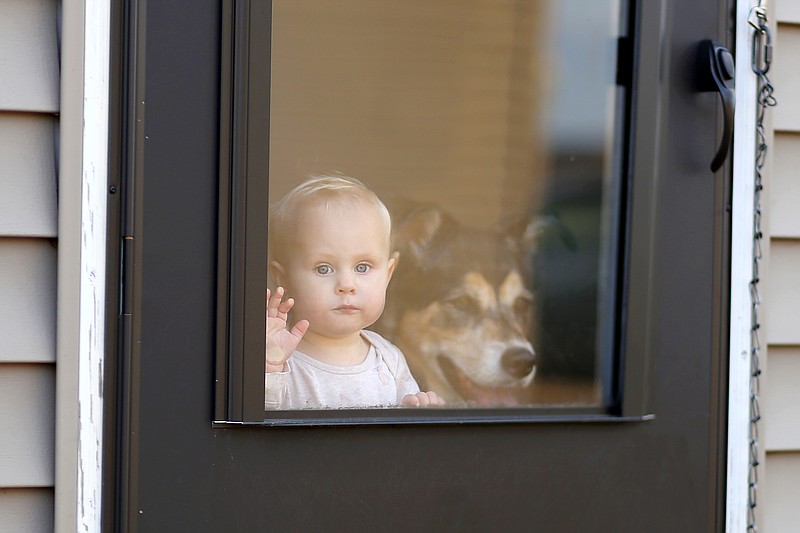One is always at home in one's past. — Vladimir Nabokov.
This week I came down with a severe case of nostalgia. The word, from the Greek nostos (return home) and algos (pain), perfectly captures the bittersweet agony I, and I'm betting you, feel when we long to return to the place we grew up. And can't.
What tripped this recent bout was a series of exercises design psychologist Toby Israel recommends in her new book "Designing-Women's Lives: Transforming Place and Self" (ORO Editions, April 2023). Notably, Israel believes you can go home again--by design.
The book illustrates how we all, consciously or unconsciously, repeat elements of our early homes in our later homes. If we want to channel the best from the past and not repeat the worst, we should reflect on the homes we knew growing up.
That's a lot to unpack.
I get Israel on the phone. "Everyone accepts that our family of origin influences the partners we choose and how we parent," she explains, "but no one talks about how the physical home environment affects us. There again, we either model what we grew up with or do the reverse because we didn't like it." Minimalists are often the product of cluttered homes.
She invites those seeking greater domestic awareness (my hand is up) to create their "environmental autobiography." Though this seems a bit out there, I plunge into the rabbit hole like a bunny chasing a carrot. Soon I am following her exercises, writing down what I remember of my childhood home growing up, and of my grandmothers' homes.
I am six-years-old visiting Grandma Jameson's house in Los Angeles, a wooden bungalow with a big front porch. The daughter of a long line of California ranchers, Dad's mom raised nine children, and took in laundry to help feed them. A litter of kittens nestles in her fireplace. Out back is an aviary where dozens of parakeets live in a screened-in shed we could walk in, a magical place for a child.
Next, I'm inside a two-story, brown, stone-and-stucco home near Scranton, Pa. It has faded floral wallpaper, cushy upholstered sofas and chairs (some velvet, all with arm protectors), lacy doilies on side tables, and a never-empty cookie jar. It smells like dried roses and dinner cooking, and brims with laughter. Here Grandma McCormack, a Scottish immigrant like my mother, lived well into her 90s.
Memories of porches and parakeets, kittens and cookies, laughter and lace swirl. I long to go back, to ask questions I will never now have answers to and didn't then care to ask.
Now I am in my childhood home, a single-story ranch house, in Orange, Calif. I can see the Disneyland Matterhorn and Catalina Island from my bedroom window. A bus ride to the beach costs three quarters. Under my mother's sure hand, the house is orderly and serviceable (a word she loved), though not decorated in any coordinated sense. The doors, front and back, are open to friends and neighbors, who often drop in just to talk.
What do I make of this? I am neither a Western rancher nor a Scottish immigrant, yet I am both. I'm supposed to write words describing my childhood home: warm, welcoming, nice but not fancy.
By now I'm a sentimental sop, calling my older brother, dragging him into this to find out what he remembers that I can't.
"Why do you want to know?" he reasonably asks.
"So I can design from within!" I say.
He knows better than to press for an explanation, but after a pause says: "Do you remember the parakeets?"
"Messages about self and place remain buried deep inside our psyches," Israel said. "Since they unconsciously rise to the surface anyway when we design our homes, we might as well identify them, and use the best and lose the worst."
Here are some ways she suggests we tap past place, and design from within:
◼️ Explore your environmental autobiography. Write down what you loved and didn't about the places you lived or knew as a child. Integrate those best memories into your home through memorable color (a parakeet green cookie jar), texture (velvet pillows), special objects (a conch shell). Also identify what was negative. Perhaps the house felt uninviting. At one of my aunt's homes, we were not allowed to go in the living room or use the "guest" towels.
◼️ Bypass trends. "When we don't follow the ought-to-should-must design directives of the day, or the trends of the moment, and instead tap into past positive influences, we stand a chance of creating emotionally fulfilling environments that feel authentic," Israel said.
◼️ Ask the deeper question. In addition to asking, "Would my blue chairs look good against my yellow walls?" Israel wants us to go beyond creating spaces that look good, to creating places that feel good because they positively connect us to our heritage, and to our place in the world.
◼️ Make room for the future. Set out something that symbolizes what you aspire to. A picture of a mountain peak, for instance, could symbolize the hard work ahead needed to reach a goal. For Israel, her aspirational image was a painting of a warm place by the water. The New Jersey resident now spends three months a year near the beach in Sarasota, Fla.
◼️ Do the work. Places affect us. If we want to live in a place that supports our growth, it's up to us to make that place, Israel says. "When you transform your home, you transform yourself, because the house is a symbol of self."
Feeling nostalgic yet?
Marni Jameson is the author of six home and lifestyle books, including "What to Do With Everything You Own to Leave the Legacy You Want."

